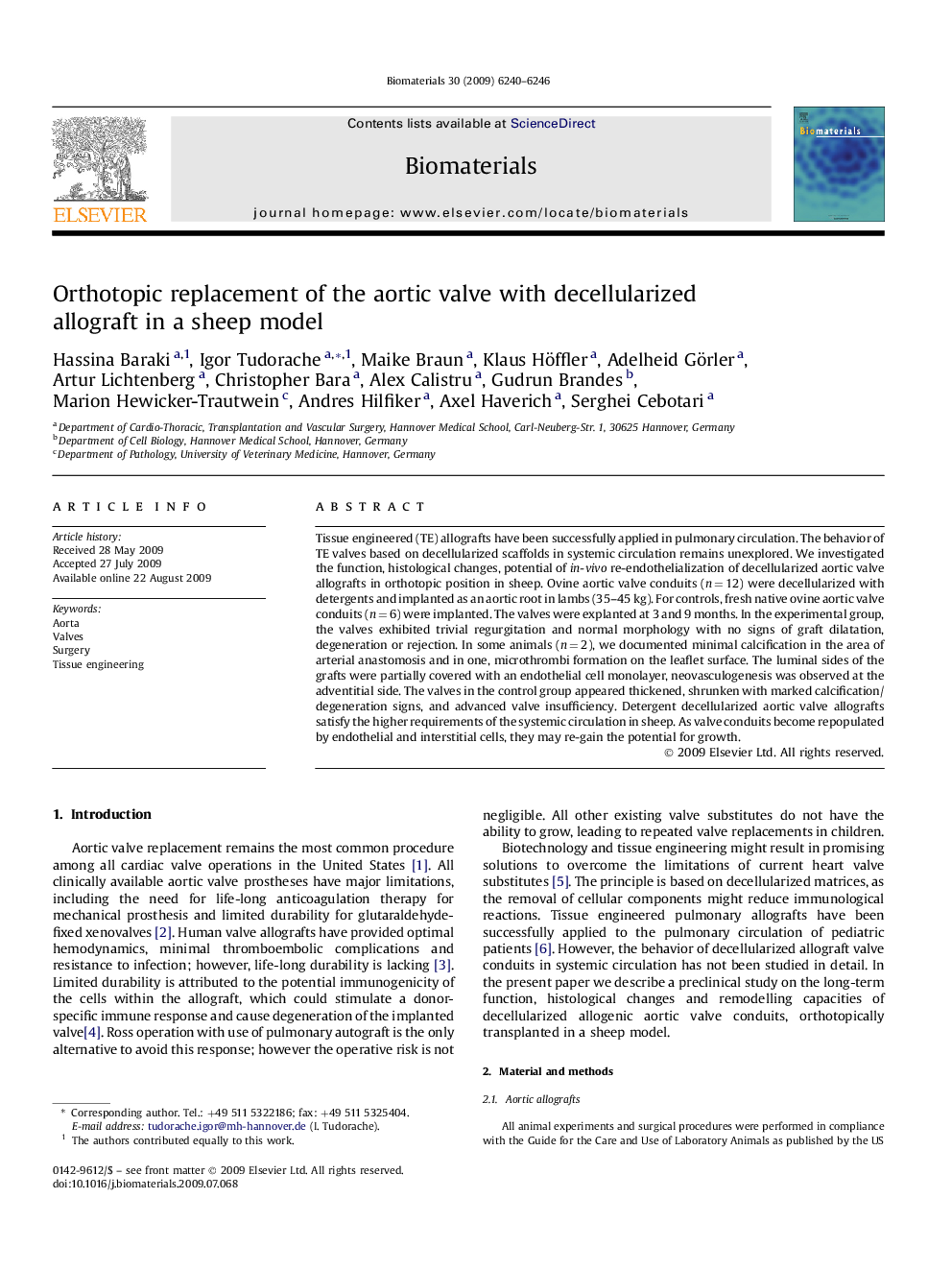| Article ID | Journal | Published Year | Pages | File Type |
|---|---|---|---|---|
| 9605 | Biomaterials | 2009 | 7 Pages |
Tissue engineered (TE) allografts have been successfully applied in pulmonary circulation. The behavior of TE valves based on decellularized scaffolds in systemic circulation remains unexplored. We investigated the function, histological changes, potential of in-vivo re-endothelialization of decellularized aortic valve allografts in orthotopic position in sheep. Ovine aortic valve conduits (n = 12) were decellularized with detergents and implanted as an aortic root in lambs (35–45 kg). For controls, fresh native ovine aortic valve conduits (n = 6) were implanted. The valves were explanted at 3 and 9 months. In the experimental group, the valves exhibited trivial regurgitation and normal morphology with no signs of graft dilatation, degeneration or rejection. In some animals (n = 2), we documented minimal calcification in the area of arterial anastomosis and in one, microthrombi formation on the leaflet surface. The luminal sides of the grafts were partially covered with an endothelial cell monolayer, neovasculogenesis was observed at the adventitial side. The valves in the control group appeared thickened, shrunken with marked calcification/degeneration signs, and advanced valve insufficiency. Detergent decellularized aortic valve allografts satisfy the higher requirements of the systemic circulation in sheep. As valve conduits become repopulated by endothelial and interstitial cells, they may re-gain the potential for growth.
